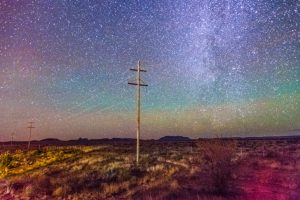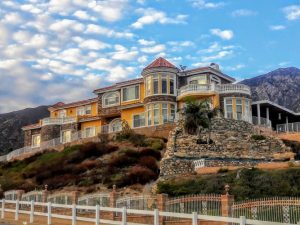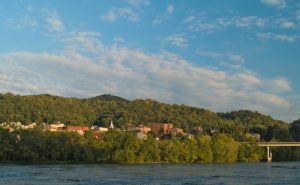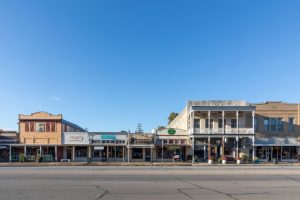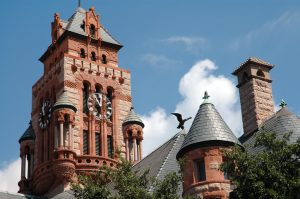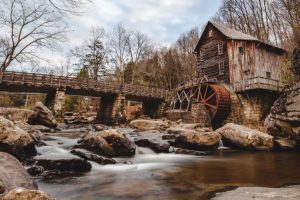 Texas : Safety by City
Texas : Safety by City
- Abilene
- Amarillo
- Austin
- Beaumont
- Brownsville
- Carrollton
- Corpus Christi
- Dallas
- Del Rio
- Dell City
- Denton
- El Paso
- Fort Davis
- Fort Worth
- Fredericksburg
- Frisco
- Garland
- Granbury
- Grand Prairie
- Gruene
- Harlingen
- Houston
- Irving
- Laredo
- Lewisville
- Llano
- Lubbock
- Luckenbach
- Marathon
- Marfa
- McAllen
- McKinney
- Mesquite
- Midland
- Nacogdoches
- New Braunfels
- Plano
- Port Aransas
- Richardson
- San Angelo
- San Antonio
- Schulenburg
- Sherman
- Smithville
- South Padre Island
- Tyler
- Waco
- Waxahachie
- Weslaco
- Wichita Falls
- Wimberley
Marathon is a small town with a big heart that sits at the crossroads of history and natural beauty in the Big Bend region of Texas.
Founded in the late 19th century as a railroad water stop, Marathon is now known as the Gateway to Big Bend National Park.
The town is part of a collection of unique places that lead to the rugged wilderness of the mountains, desert, and Rio Grande Valley.
Marathon stands out for its funky vibe, with unique casitas and cottages welcoming overnight guests.
Even the one hotel here – the Gage Hotel – is historic and one of the most sought-after places to stay across the Big Bend of Texas.
This whole region of Texas has some of the darkest night skies in the country, and mixed with the clear weather that dominates the landscape, the stunning celestial nightlife is one reason alone to visit Marathon.
Whether you’re seeking adventure in the great outdoors or a peaceful retreat in a quaint town, Marathon offers a glimpse into the soul of West Texas—a place where history and natural beauty converge, making it a worthy destination for any traveler seeking an authentic experience.
Warnings & Dangers in Marathon

OVERALL RISK: LOW
There's a low risk in Marathon and the Big Bend area overall. Crime rates are low, and there are plenty of things to do if you're an outdoorsy person.

TRANSPORT & TAXIS RISK: LOW
You'll need a vehicle to get here, whether that's a rental car or your own car. No public transportation is available between the cities or to and from the park. Marathon is only one square mile long, so you can walk if you need to get around town.

PICKPOCKETS RISK: LOW
This is a low risk, with no purse snatchings or pickpockets reported in the past five years. In fact, during that time, only 30 thefts were reported.

NATURAL DISASTERS RISK: MEDIUM
The biggest risks here are severe thunderstorms capable of producing tornadoes (usually in spring or summer), flash flooding from those storms, and excessive heat in the summer. Treat it as a medium risk. Even days that start out clear and sunny can turn into intense storms in the afternoon or early evening.

MUGGING RISK: LOW
There's a low risk of muggings, with only a handful of robberies each year - and those are usually targeting businesses or homes. Of course, you still want to be careful, especially at night. The town isn't very well-lit intentionally to allow better viewing of the night skies.

TERRORISM RISK: MEDIUM
This is a tricky one. Marathon isn't a terrorist target, but illegal immigrants and illegal drugs that cross the border can come right through the town and connecting roads. It's not uncommon to see groups of people seeking refuge running through the wilderness. I would treat it as a medium risk and just stay away from anyone you don't know. Don't feed, house, or offer rides to immigrants.

SCAMS RISK: LOW
Check local law enforcement social media sites for the latest scams. The local Better Business Bureau office and the state Attorney General’s office will have common scam tactics and protection advice. You're more likely to be panhandled by immigrants or pressured to buy things from them than scammed. Always say no and walk away.

WOMEN TRAVELERS RISK: LOW
The risk is low, but you need to have survival skills in the desert and mountains to enjoy your time here. It's not recommended that anyone hike alone. Even a group of two is frowned upon. Three or more people hiking is ideal so that someone can go for help if there's an accident or injury.

TAP WATER RISK: LOW
The U.S. has strict standards for tap water per the Safe Water Drinking Act. Communities are required to provide a Water Quality Report (Consumer Confidence Report) once a year by July 1. Brewster County provides the drinking water here, and as of 2022, all standards are met or exceeded. The only thing you do need to check for is water restrictions, which could lead to limited time for bathing.
Safest Places to Visit in Marathon
Visit Big Bend is the name of the website for the region, including Brewster County.
Each community is detailed, with a list of food, drink, and lodging for Marathon.
One thing to prepare for is the uniqueness of the lodging in Marathon.
The eclectic collection of cottages, casitas, and hotels might appear sketchy at first glance if you don’t know how special they are – most are owned by generations of families in the Big Bend region.
The Gage Hotel is the most upscale option in the Marathon (and the Big Bend Region, to be honest), while the Marathon Motel & RV Park is the largest gathering spot, with a Dark Sky Park behind the motel.
Here’s a quick summary of the other Big Bend area towns:
- Alpine: Population approximately 6,000. What sets Alpine apart is its vibrant arts scene, including the annual Viva Big Bend music festival that attracts musicians and visitors from all over.
- Terlingua: Population roughly 1,000. Terlingua is unique for its eccentric, Bohemian atmosphere, with quirky art installations, vibrant festivals like the Terlingua Chili Cook-off, and the haunting ruins of the Chisos Mining Company.
- Study Butte: Population approximately 267. Study Butte distinguishes itself with its rugged, frontier feel, serving as a hub for outdoor enthusiasts seeking adventure in the rugged Chihuahuan Desert.
- Marfa: Population around 1,700. Marfa is renowned for its thriving contemporary art scene, highlighted by the mysterious Marfa Lights phenomenon and the Chinati Foundation’s minimalist art installations.
Located just outside of Marathon, Post Park is home to the ruins of Fort Pena Colorado, a 19th-century military outpost established to protect settlers from Native American raids.
Visitors can explore the crumbling adobe walls and learn about the fort’s role in the region’s history.
The natural settings are divine, with a perennial spring that once provided a desert oasis for the troops.
The Museum of the Big Bend in Alpine showcases the diverse cultural and natural history of the Big Bend region.
Exhibits cover topics such as Native American artifacts, Spanish colonial exploration, frontier life, and the geological wonders of the area.
Explore the rich history of the Terlingua Ghost Town and the surrounding area at this interpretive center.
Learn about the town’s boom-and-bust mining history, its diverse cultural heritage, and the unique characters that shaped its past.
Big Bend National Park boasts over 150 miles of hiking trails, ranging from easy walks to challenging backcountry routes.
Explore scenic trails like the Window Trail, Lost Mine Trail, or South Rim Loop for breathtaking views of the Chihuahuan Desert and surrounding mountains.
Big Bend State Park is next door, with its own network of trails winding through desert landscapes, along the Rio Grande, and up into the Chisos Mountains.
Popular hikes include the Closed Canyon Trail, the Hoodoos Trail, and the scenic overlooks along Big Hill.
Don’t burn too much energy during the day because you’ll want to stay up at night in the Big Bend region.
Marathon and surrounding communities have some of the darkest night skies in the country.
Whether you view them alone or at a group viewing location in Marathon or Marfa, you will be amazed at how much light pollution blocks out these fantastic views in most cities.
Places to Avoid in Marathon
Marathon is a safe place to visit and doesn’t require you to avoid any particular part of town to stay safe.
However, there are some important things to know about this region.
Marathon is one of the first cities for those who cross the border illegally.
A Border Patrol station is located along the highway between Big Bend National Park and Marathon.
This is NOT a border crossing.
It’s just a place where people close to the border can prove they are here legally.
Most refugees won’t use the Border Patrol station and could be found in groups off the road or in remote areas.
Whether it’s in the park or around the towns, refugees are known to sell items or leave displays out (like water or snacks), hoping someone will buy them.
It is illegal to buy these items, especially in the national park.
Avoid picking up hitchhikers, even if there are women and children in the group.
Safety Tips for Traveling to Marathon
- Marathon is too small to have a police department. The Brewster County Sheriff’s Office provides law enforcement from Marathon down to the Texas border. You can follow them on Facebook @brewstercountytx.
- Brewster County uses the Hyper-Reach system to send out emergency notifications. That service is free, and you can sign up quickly to get alerts for severe weather and public safety threats to your email or mobile phone.
- Don’t count on mobile service in the national park on the rural roads. Your carrier should have a coverage map, which helps you see where the dead zones will be. Also, summer visitors should bring a cooling case for mobile devices. I lived in the desert for many years, and my phone got overheated several times – once damaging my phone beyond repair.
- For the utmost safety, carry a weather radio with you to listen to the latest forecasts and possible storms. You can also purchase walkie-talkies to keep in touch with other members of your group if you get separated.
- I’d strongly suggest researching the wildlife in this part of the country. Black bears, coyotes, rattlesnakes, scorpions and javelinas live here. You’ll need to carry all your food in a bear-proof container and be extra careful about your trash so that you don’t attract unwanted attention.
- If you’re going to be stargazing, get a red flashlight to navigate around the dark areas. A white flashlight can cause unnecessary light pollution for those around you. I also recommend getting a blacklight since that can help spot scorpions in the dark.
- Whether you’re staying in a hotel or at a campsite, always shake out your shoes before you put them on. Spiders, scorpions, and centipedes look for cool, dark places like shoes for shelter.
- Not all the roads in Big Bend National Park are paved. Review any descriptions of a trail before you put it on your agenda. Some roads can only be handled by four-wheel drive high-clearance vehicles.
- Do not attempt to drive across a flooded road. Heavy monsoon rains can cause flash flooding with powerful currents that can carry vehicles and people away. Avoid the backroads for a few days after heavy rain since it can be a muddy mess.
- Both Big Bend State Park and Big Bend National Park have their own admission fees and permit requirements. Don’t get the two confused.
- The Rio Grande forms the international border through the parks, and technically, being in the middle of the river is crossing the border. However, it’s only an illegal crossing if you land on the Mexican side. Always take breaks on the U.S. side.
So... How Safe Is Marathon Really?
Marathon is a safe town to visit by all accounts, with crime rates that don’t even go into double digits for most categories.
Normally, I don’t like to break down crime data for entire counties when we’re just focused on one city, but the rural nature of Brewster County emphasizes the safety of Marathon and the handful of nearby cities.
Even looking back a decade, crime hasn’t been a huge problem here – at least, not the kind the FBI tracks.
I honestly can’t remember the last county I saw that had just five thefts in a year, as Brewster County did in 2022.
Violent crimes are largely between people who know each other, with just 8% (a total of 4) against strangers in the past 10 years.
There’s a lot to be said for minding our own business in this region, as you don’t want to get caught up in an illegal border crossing situation or drug deal.
That extends even to situations where you might be inclined to get involved, like a car broken down on the side of the road.
Just let the police handle it, and you can always call to let the authorities know of the milemarker where assistance is needed.
Then you need to be prepared for the weather.
Underestimating the power of the summer heat or not paying attention to incoming storms can be dangerous or deadly.
This area is a beautiful wilderness, and you’ll love exploring the mountains, desert, and valleys.
Just be sure to use all the safety steps we’ve discussed here.
How Does Marathon Compare?
| City | Safety Index |
|---|---|
| Marathon | 78 |
| Deadwood | 80 |
| Sturgis | 80 |
| Pierre | 81 |
| Spearfish | 80 |
| Hill City | 83 |
| Sevierville | 73 |
| Temuco (Chile) | 31 |
| Puno (Peru) | 45 |
| Nara (Japan) | 88 |
| Kanazawa (Japan) | 83 |
| Hammamet (Tunisia) | 78 |
| Sidi Bou Said (Tunisia) | 42 |
Useful Information

Visas
U.S. Visitors should review the U.S. State Department website for visa and visa waiver information. If you plan on crossing the border in Big Bend State Park (or anywhere else along the way), you should review the requirements on the Border Patrol and Customs website. Crossing into Mexico is much easier than coming back, so ensure you bring the right documentation for BOTH crossings.

Currency
Only the U.S. Dollar (USD) is accepted in the United States. International airports usually have a currency exchange desk on site, while regional airports won’t. Your home bank offers the lowest fees. If you plan to cross into Boquillas through the national park, vendors there accept U.S. Currency. However, they will not give change, so bring plenty of $1 and $5 bills.

Weather
Winters have wild temperature shifts from day to night, with highs in the 60s F and lows below freezing. From April through October, temperatures get above 80° F during the day, and June through August get into the 90s. Triple-digit heatwaves are likely in the summer. You need sunscreen, bug spray, clothing with UV protection, and hats. Due to the rugged terrain, bring hiking boots and trekking poles.

Airports
This area is remote, and it will take a long road trip to get to an airport. Midland/Odessa's airport is 2.5 hours away, and El Paso (ELP) has the largest airport, but it's also a 4-5 hour drive.

Travel Insurance
Travel insurance goes into effect as soon as you purchase it. Comprehensive insurance offers the best protection and peace of mind.
Marathon Weather Averages (Temperatures)
Average High/Low Temperature
| Temperature / Month | Jan | Feb | Mar | Apr | May | Jun | Jul | Aug | Sep | Oct | Nov | Dec |
|---|---|---|---|---|---|---|---|---|---|---|---|---|
| High °C |
17 | 19 | 23 | 27 | 31 | 33 | 33 | 32 | 29 | 26 | 21 | 18 |
| Low °C |
-2 | 1 | 3 | 7 | 12 | 16 | 17 | 17 | 14 | 9 | 2 | -1 |
| High °F |
63 | 66 | 73 | 81 | 88 | 91 | 91 | 90 | 84 | 79 | 70 | 64 |
| Low °F |
28 | 34 | 37 | 45 | 54 | 61 | 63 | 63 | 57 | 48 | 36 | 30 |
Texas - Safety by City
| City | Safety Index |
|---|---|
| Abilene | 67 |
| Amarillo | 65 |
| Austin | 65 |
| Beaumont | 51 |
| Brownsville | 68 |
| Carrollton | 72 |
| Corpus Christi | 71 |
| Dallas | 64 |
| Del Rio | 68 |
| Dell City | 81 |
| Denton | 72 |
| El Paso | 77 |
| Fort Davis | 80 |
| Fort Worth | 77 |
| Fredericksburg | 85 |
| Frisco | 84 |
| Garland | 83 |
| Granbury | 74 |
| Grand Prairie | 72 |
| Gruene | 82 |
| Harlingen | 75 |
| Houston | 59 |
| Irving | 79 |
| Laredo | 68 |
| Lewisville | 80 |
| Llano | 83 |
| Lubbock | 38 |
| Luckenbach | 77 |
| Marathon | 78 |
| Marfa | 80 |
| McAllen | 74 |
| McKinney | 84 |
| Mesquite | 52 |
| Midland | 78 |
| Nacogdoches | 78 |
| New Braunfels | 83 |
| Plano | 86 |
| Port Aransas | 83 |
| Richardson | 81 |
| San Angelo | 83 |
| San Antonio | 53 |
| Schulenburg | 83 |
| Sherman | 73 |
| Smithville | 84 |
| South Padre Island | 70 |
| Tyler | 70 |
| Waco | 61 |
| Waxahachie | 83 |
| Weslaco | 68 |
| Wichita Falls | 68 |
| Wimberley | 81 |

